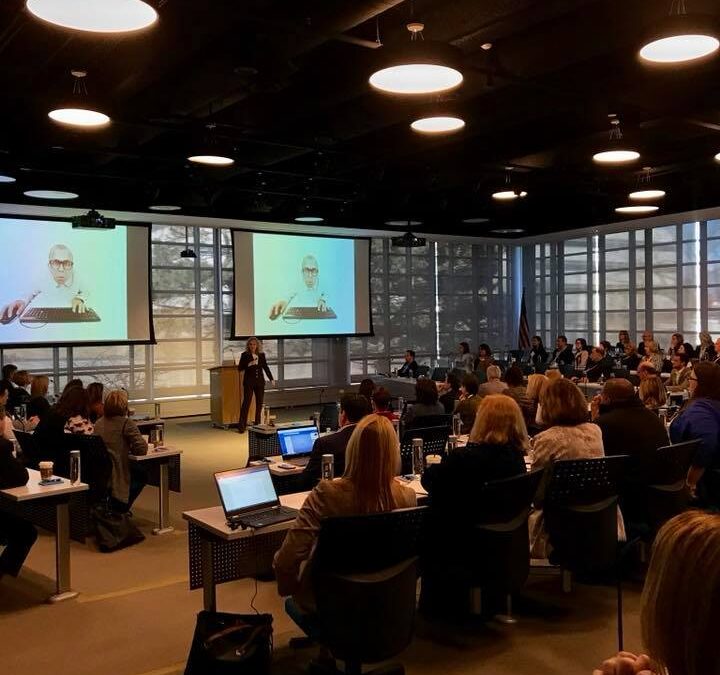If you had the choice of listening to a speaker who had actually climbed Mt. Everest or one that had read about climbing it in a book, which one would you rather hear? I would rather hear from the one who had actually been there and experienced it. The only people who can tell the real stories are the ones who went through it.
Keynote speaker experience
A keynote speaker who has not been there wouldn’t be able to tell a story like Lou Kasischke, survivor of one of the deadliest disasters on Mount Everest that claimed eight fellow climbers’ lives in 1996.
For climbers, Everest is the Gold Standard. It’s a club that most people could never join. The price of an expedition alone is around $58,000. That excludes most people. And on top of that, you have to be in extremely good physical and mental shape. I’ve enjoyed climbing some decently high mountains in New Zealand, but have never even considered climbing Mt Everest. But it’s nice to hear about it from those who were brave enough to do it. I’m sure the audience was riveted to hear Kasischke tell about his story of survival:
“I’m gasping for air again, the cold frigid air is making my insides feel like they’re on fire,” Kasischke said. “It’s 30 to 40 degrees below zero. But none of that matters. Sheer will keeps me going. Sheer will is all that matters.”
That’s not something you can read about in a book. You can’t just do a little bit of research and tell that story like he can. It’s not the same experience.
Overcoming fear
Now imagine you are climbing the tallest peak in the world… but you’re blind. Erik Weihenmayer was the first blind person to reach the summit of Mt. Everest in 2001. That put him on the cover of Time Magazine. He’s also the only blind climber to complete the Seven Summits. But he doesn’t stop there. He’s constantly challenging himself to do bigger and better things. Things that most of us will only read about in a book. If you really want to be inspired, check out his website. And then tell me if you would rather hear from a keynote speaker who did research on adventure, or from Erik, who lives it every day and inspires you with his stories about overcoming fear.
Being a keynote speaker isn’t something you can learn by reading a book. You can’t learn how to do it by having someone tell you about it. Eventually you have to actually get up and speak. You can’t learn how to be an actor or painter or dancer by reading about it in a book or from hearing someone talk about it. You actually have to do it.
Innovation keynote speaker experience
An innovation keynote speaker who doesn’t have experience, who has never invented or innovated a unique product, service or business model simply doesn’t know what it’s like to go through the process of trial and error. Inventing a product and getting it on the market is a little like climbing Mt. Everest. It’s an incredibly daunting process. Ask any inventor who has done it. When I first started there weren’t any books on inventing or shows like “Shark Tank”. I didn’t have a mentor to guide me and steer me in the right direction. I spent way too much time and money going down blind alleys. I would love to have heard a speaker talk about their journey and what I should expect. I would love to have heard someone with first-hand experience and knowledge.
An innovation keynote speaker with first-hand experience is able to tell a story in a way a speaker with second-hand knowledge can’t do. They may have facts they read in a book or knowledge of speaking to an expert. But they don’t own those stories and can’t tell them like the person who experienced them.
Innovation keynote speaker learning curve
If you want to learn how to be a successful entrepreneur would you rather hear a speaker who has talked to Daymond John or would you rather hear his stories of struggle and hard work himself? Would you rather hear someone talk about what they learned in a book or hear straight from someone who went through all of the trial and error of a learning curve?
According to Investopedia:
“A learning curve is a mathematical concept that graphically depicts how a process is improved over time due to learning and increased proficiency. The learning curve theory is that tasks will require less time and resources the more they are performed because of proficiencies gained as the process is learned.”
Inventor learning curve
As an inventor who went through many years of a learning curve, I can tell you that no amount of reading will give you the firsthand experience of going through it yourself. If you couple that with an innovation speaker who also has done the secondhand homework, it’s a powerful combination. You get the best of both worlds. An actual inventor and innovator who has been through it and also has the research of how others innovate will have a broad range of both experience and knowledge that a speaker who just reads about innovation in books doesn’t have.
All inventors are innovators. The US Patent and Trademark Office states that an invention must be new, useful and not obvious. Not all innovation is about inventions and products, but an inventor has in-depth knowledge of innovation through first-hand experience.
So, when it comes to hiring an innovation keynote speaker, do your homework to find one who has both firsthand experience and secondhand knowledge. Make sure your audience gets the most value from a presentation.

